Disappearing pinta: Are the milkman's days finally numbered?
- Published
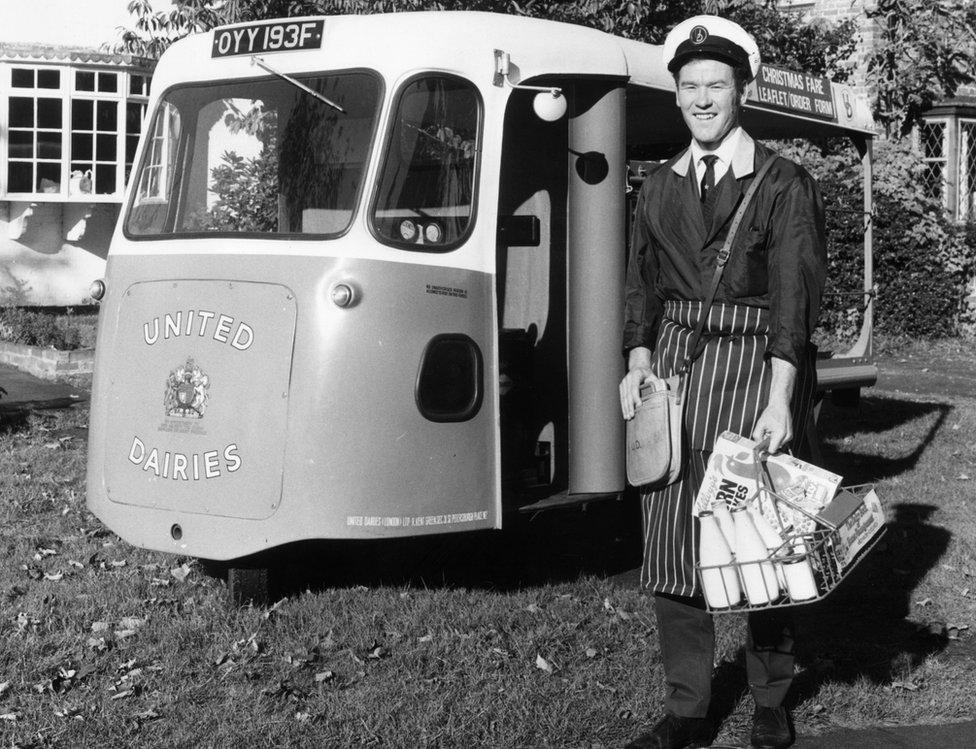
A traditional view of Britain's milkman: Once almost all of us relied on them, but far fewer of us do now
The gentle clink of glass bottles and the whirr of the electric milk float will be an instantly familiar sound to many.
But while the number of British households getting their milk delivered has declined dramatically in the past 20 years - we shouldn't write off the milkman just yet.
At 7am on a cold weekday morning, Colin Chesnaye is three hours into his round through Victorian terraces and modern estates. With the ease of a man who has done this job for 37 years, he pulls up at each house and hops out of the float.
He brings glass bottles to houses and packs of plastic cartons to schools.
Tucked into a compartment in the front of his float are two ledgers containing the handwritten detail of every customer and how much money they owe. But he seldom has to check an order - it's all in his head
But it's more than just a delivery service.
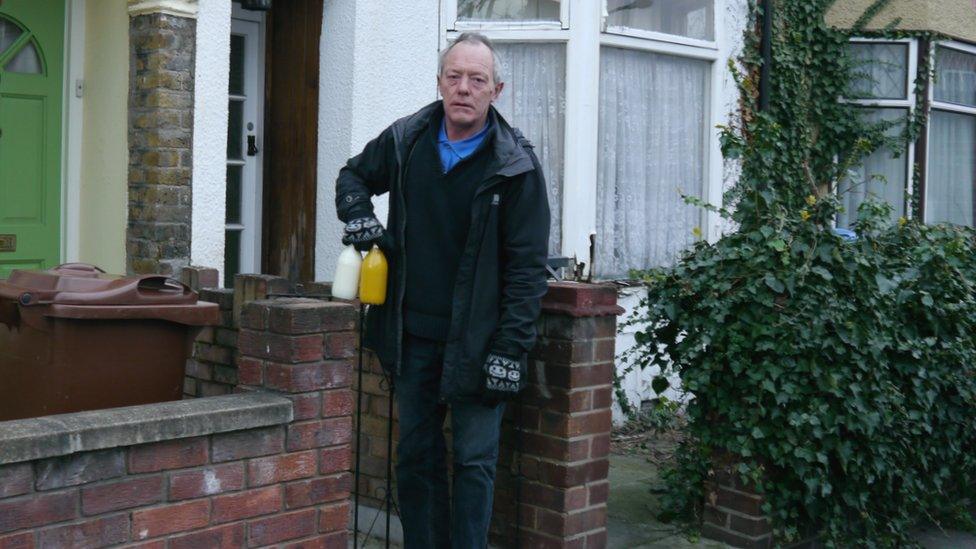
Colin Chesnaye has been delivering milk for 37 years
"We're the fourth emergency service," he tells me.
"I had one person, she was always leaving the empty bottles out. This particular day there were no empty bottles… I popped my head through the letterbox and saw her unconscious.
"The paramedics said I saved her life."
Dramatic decline
Although Colin's milk round isn't often as eventful as that, he's always happy to help out with any heavy lifting or jobs around the house.
"I'm always saying that to people, especially older people, leave a note in the bottle - 'milkman please knock'."
But fewer of us are taking up the kind of services Colin has to offer.
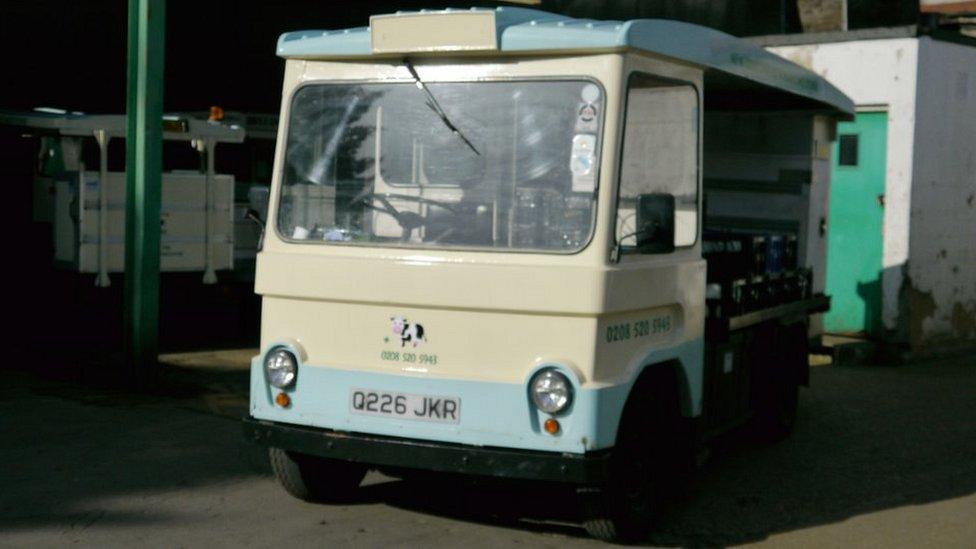
London's Parker Dairies says its milk delivery business has now stabilised
But there's a core group of loyal customers who feel the extra pennies are worth it to have a separate milk delivery.
Paul Lough, depot manager at Parker Dairies in Walthamstow, East London has seen has seen the company's milk delivery business stabilise over the past five years. it now delivers to 12,000 customers a week.
"We get a lot of love from the hipsters…people like the eco stuff, the glass bottles, the electric milk float and supporting a local business."
Paul says that people will pay a higher price for milk because of the personal service they bring, especially important to older and more vulnerable customers.
"Every one of our milkmen will have two or three customers on their round and the only human contact they'll have all week will be the milkman."

Britain's pinta: A history of milk in a bottle
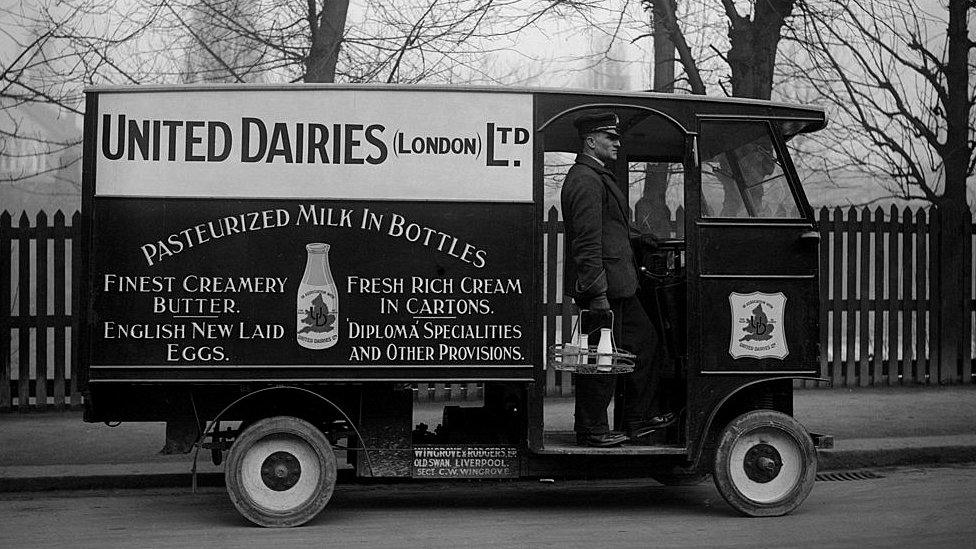
In 1880, milk delivery in bottles began in the UK, brought in a horse-drawn cart, before that milk was poured from large containers into milk jugs at each house
The Express Dairy Company produced the first glass milk bottle in Britain though the idea came from New York
The first bottles had a porcelain stopper held on by wires and milk was delivered four times a day
The introduction of fridges and modern milk processing meant deliveries became less frequent and fresh milk can now be kept in a fridge for about a week

Although there are several small dairies around the country, the largest market share in milk delivery is controlled by Milk & More, which was taken over by the dairy giant Muller Milk & Ingredients in 2015.
Milk & More employs 1,250 milkmen and delivers to 600,000 homes, the majority of these in England. Although the firm declined an interview, it said it would continue to deliver milk.
Home deliveries
But impressive customer service and nostalgia for a bygone era are not enough to guarantee the survival of the milkman, the business has had to adapt.
Some milkmen start their rounds as early as 11pm because there isn't anybody at home to take in the milk after 8am, and they provide an increasing range of goods - anything from compost for the garden to toilet roll - along with the milk.
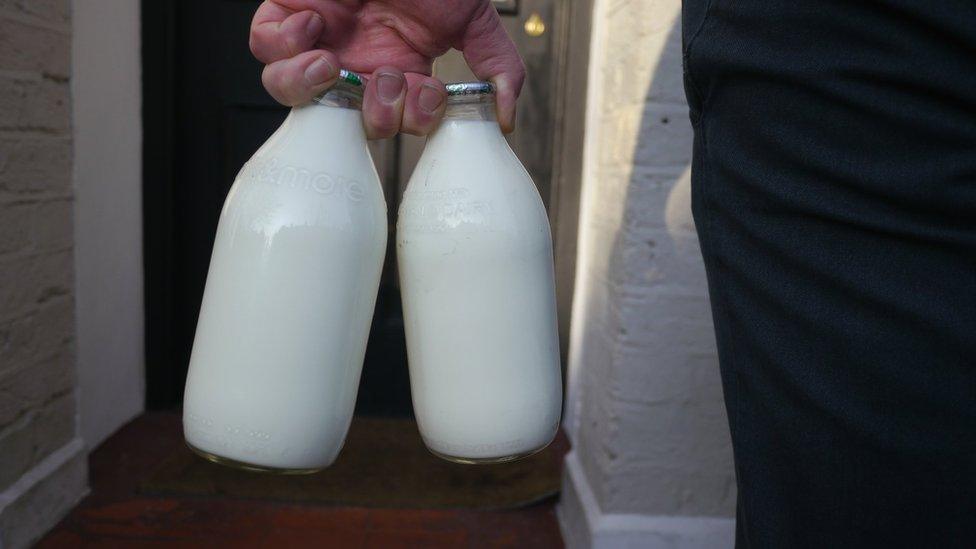
Some milkmen now start their rounds as early as 11pm at night
The milk doorstep delivery business is tapping into the growing trend for grocery home delivery.
The idea of having our food brought to our doors has made a comeback thanks to the the likes of Ocado, Tesco and Sainsbury - and now Amazon is joining in through a deal with Morrisons.
By 2020 it is predicted that we'll have 9% of our groceries delivered. Technology is a key driver of online shopping and home delivery and new developments will continue to change the business.
"We are in an experimental phase - we're going see a lot more innovation around food and drink online," says James Walton, chief economist at the research charity IDG.
He says technological innovation could help the grocery business to address the thorny problem of the expensive "last mile" in the delivery process. Increased digital connectivity could allow retailers to become much more flexible in how they respond to the demands of customers.
Digital future
Firms could in future outsource delivery using a model similar to that used by the cab company, Uber. "Those who have a vehicle heading in the right direction might say, we can handle that," says Mr Walton.
That might be a digital innovation too far for the milk delivery business, which relies on our love of the friendly, local milkman checking up on us. But it is starting to embrace the digital era - many customers can now order and pay online.
"We're just getting into Twitter and websites and Facebook," says Parker Dairies' Paul Lough. "We have trained one of our blokes up to read emails."
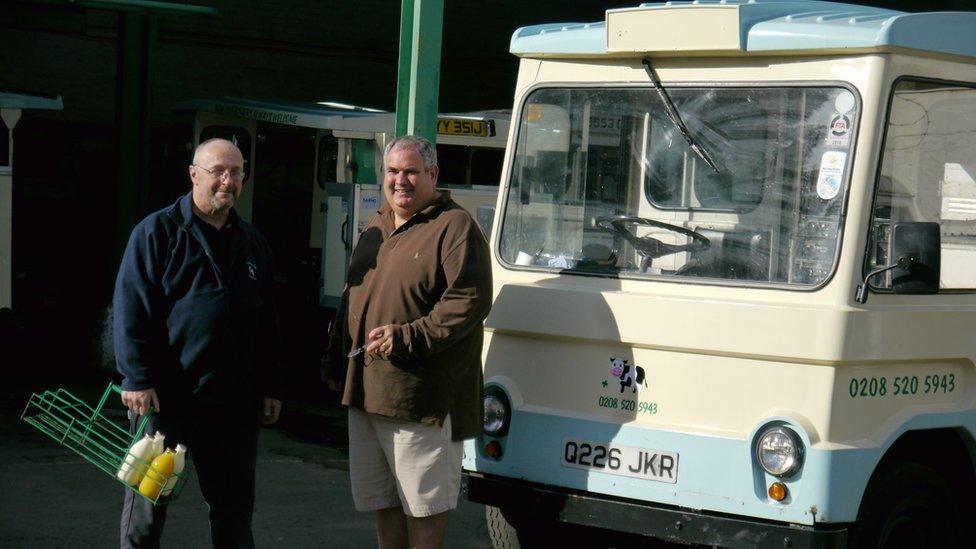
We are Luddites in the milk industry", says Paul Lough (right) of Parker Dairies
Walthamstow resident Roz Collier, who started having her milk delivered three months ago primarily to support a local business, uses Twitter to order her milk.
"I tweeted last Thursday night with a change to my Friday order and they got back to me and informed the milkman immediately. My only wish is for them to take online payments instead of cash."
Despite the industry's best efforts to move with the times, and to compete with the supermarkets, the future of the traditional milkman remains uncertain.
But Paul says that is nothing new and recalls the day he started: "A couple of the yard men came up to me and said I don't know why you bothered - it's got five years."
That was 24 years ago and he's still there.
- Published29 February 2016

- Published18 August 2015
- Published26 September 2014
